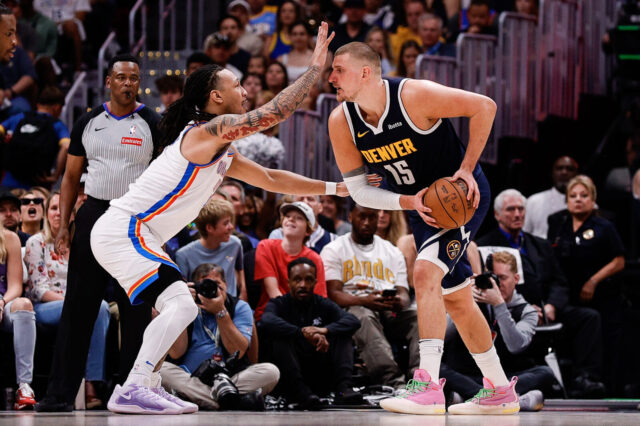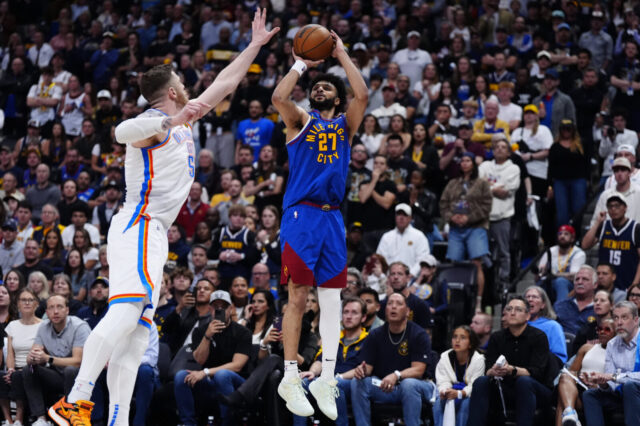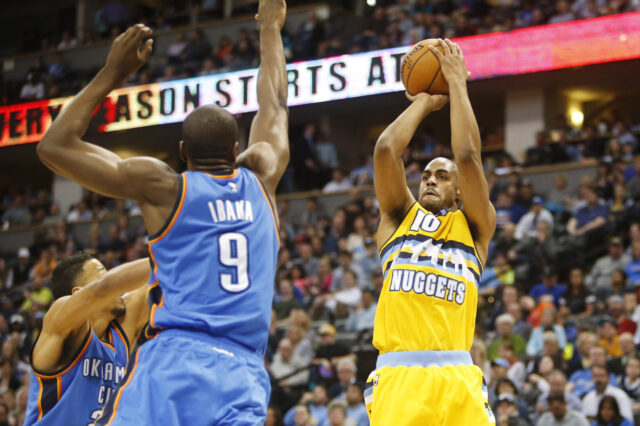In the form of a nice, round number, Emmanuel Mudiay had 40 games in which he shot below 40 percent. He also had 21 games in which he scored less than ten points and 29 games of four turnovers or more.
Gary Harris had 12 games in which he played 30 minutes and attempted less than ten shots. He had 32 games with one assist or fewer and 35 games with two rebounds or fewer.
Nikola Jokic, as consistent as he was, had an astounding 61 games in which he took less than ten shots. When he took ten shots or more, the Nuggets posted a record of 9-10, a reasonable number given that they played 14 of those 19 games against playoff teams.
These numbers reveal the inconsistencies of the 2015-16 Denver Nuggets. Young players are inconsistent, of course, but the Nuggets were a team full of young players, and in spite of forced playing time for the youngest members on the roster, the team managed to find an extra three wins over the previous season.
But now, it’s year 2, and believe it or not, after a year of growth, the Nuggets starting lineup managed to stay the same age:
| Year | Starting Lineup | Average Age |
|---|---|---|
| 2015-16 | Emmanuel Mudiay (19), Gary Harris (21), Danilo Gallinari (27), Kenneth Faried (26), Nikola Jokic (20) | 22.6 |
| 2016-17 | Emmanuel Mudiay (20), Gary Harris (22), Danilo Gallinari (28), Nikola Jokic (21), Jusuf Nurkic (22) | 22.6 |
This, of course, has everything to do with the addition of Jusuf Nurkic, the Bosnian center everyone was so excited with during the final year of the Brian Shaw era.
And yet again, I must bring up consistency. Nurkic had 15 games with a positive plus/minus while on the court…and 15 games with a negative plus/minus. In 20 of his 32 contests, he shot under 50 percent from the field as one of the biggest players on the court.
It’s clear that the Nuggets had a consistency problem last year, and combined with the addition of three more rookies to the roster in Jamal Murray, Juancho Hernangomez, and Malik Beasley, there are reasons to temper expectations.
But I won’t be tempering mine, and here’s why.
This content is no longer available.
First and foremost is the return of Danilo Gallinari. If this preseason has been an indication of anything, it’s that Gallo will be a consistent scorer throughout the year. His offensive looks have been easier in the Balkan Buddy Ball lineup, and by simply taking what’s given to him, he should be counted on for 15+ points every night with solid efficiency.
Second is the bench unit. Will Barton returns to continue scoring in his expanded role, but the real additions to this group are Wilson Chandler and Kenneth Faried. Though he has struggled with consistency in previous seasons, Chandler should bring a steadying hand on both ends which Jakarr Sampson and Axel Toupane could not do last year. Faried will continue to bring the energy, and his speed against opposing centers will be a nightmare for others to combat.
Darrell Arthur will eventually return as well, and while he and Jameer Nelson are the incumbents to fill out the rotation, look for Murray and Hernangomez to immediately vie for playing time. Between the young guns and the veterans, whoever plays the best consistently will complete the rotation.
Third is the internal improvement of the young starters. I neglected to mention at the beginning that each player developed nicely throughout the season.
- Emmanuel Mudiay second half statistics: 14.9 points, 4.9 assists, 3.7 rebounds, 39.3/36.4/77.5 triple slash line. Added aggression and confidence provided heavy improvements.
- Gary Harris’ last 30 games saw him score in double-digits 27 times. Added aggression and confidence provided moderate improvements.
- Nikola Jokic had posted three or more assists in 21 of the 28 games in the second half of the season, and he also averaged 9.0 rebounds in the second half. Added minutes and confidence provided improvement over more minutes.
- Jusuf Nurkic averaged one full steal and nearly two full blocks in mainly reserve minutes in the second half. The only two players in the NBA to average 1.0 steals and 1.5 blocks were Anthony Davis and Paul Millsap. Added confidence led to consistent output.
It’s clear that each of the young players made strides throughout the season last year, and while there are still things for each player to work on, the list became noticeably smaller. Because each player made noticeable improvement, there is potential for even more improvement, and none of the young players are close to their final forms.
Last but not least, it’s year 2 in Michael Malone’s system, and the expectations are higher. The players have an added year of familiarity with what the coaches expect from each of them, and Malone will be quicker this year to avoid long stretches of bad basketball. Last year, he was forced to develop players. This year, he has a depth chart full of talented players begging for more time. Whoever provides the best chance to win will be on the court.
In the end though, the Nuggets are tired of bad stretches of basketball. They are looking for more consistency on both ends of the floor, and while they understand that development is key, they are hoping for their younger players to be better. If the young guys are up to the task, then 40+ wins and a playoff birth isn’t so much to ask for anymore.


